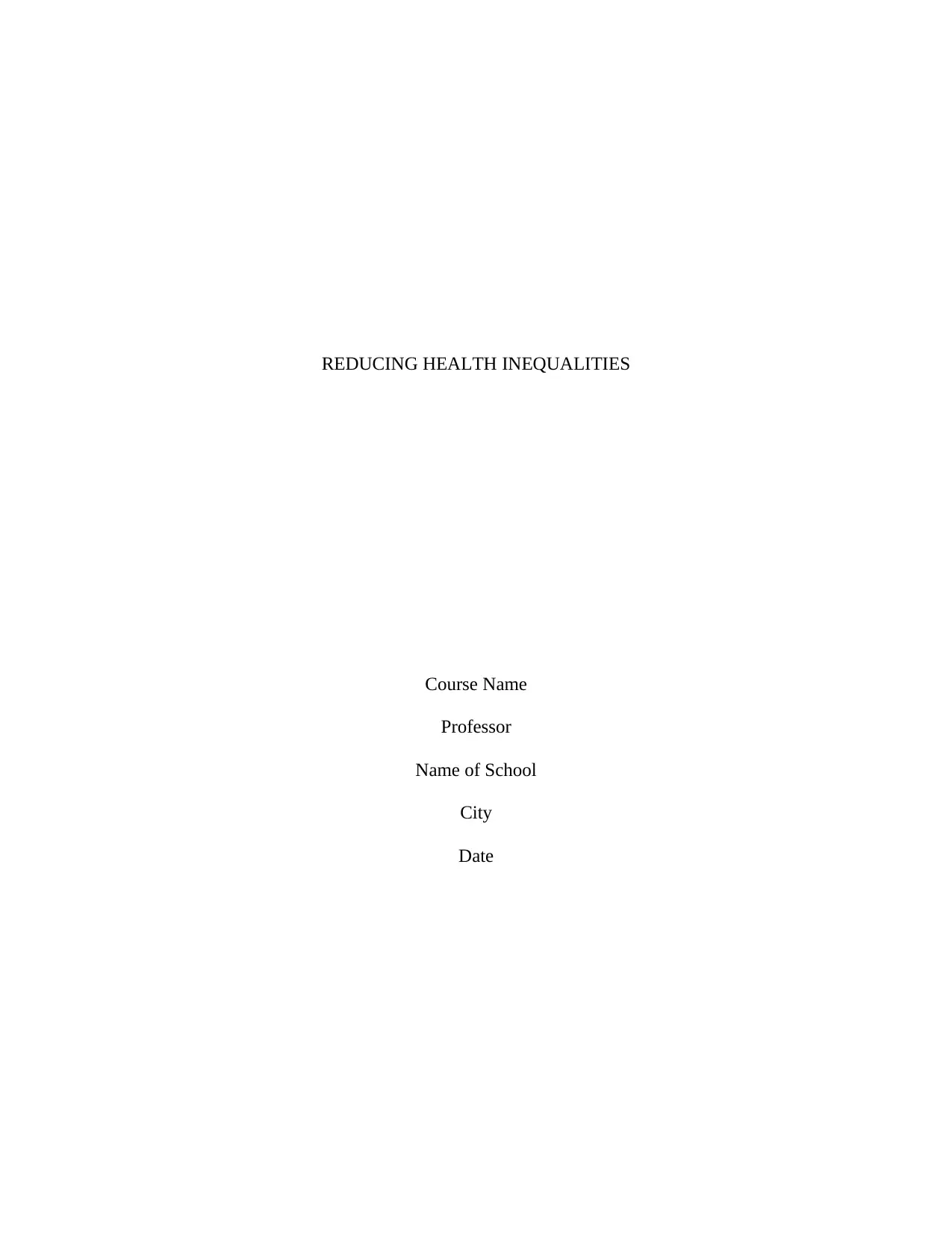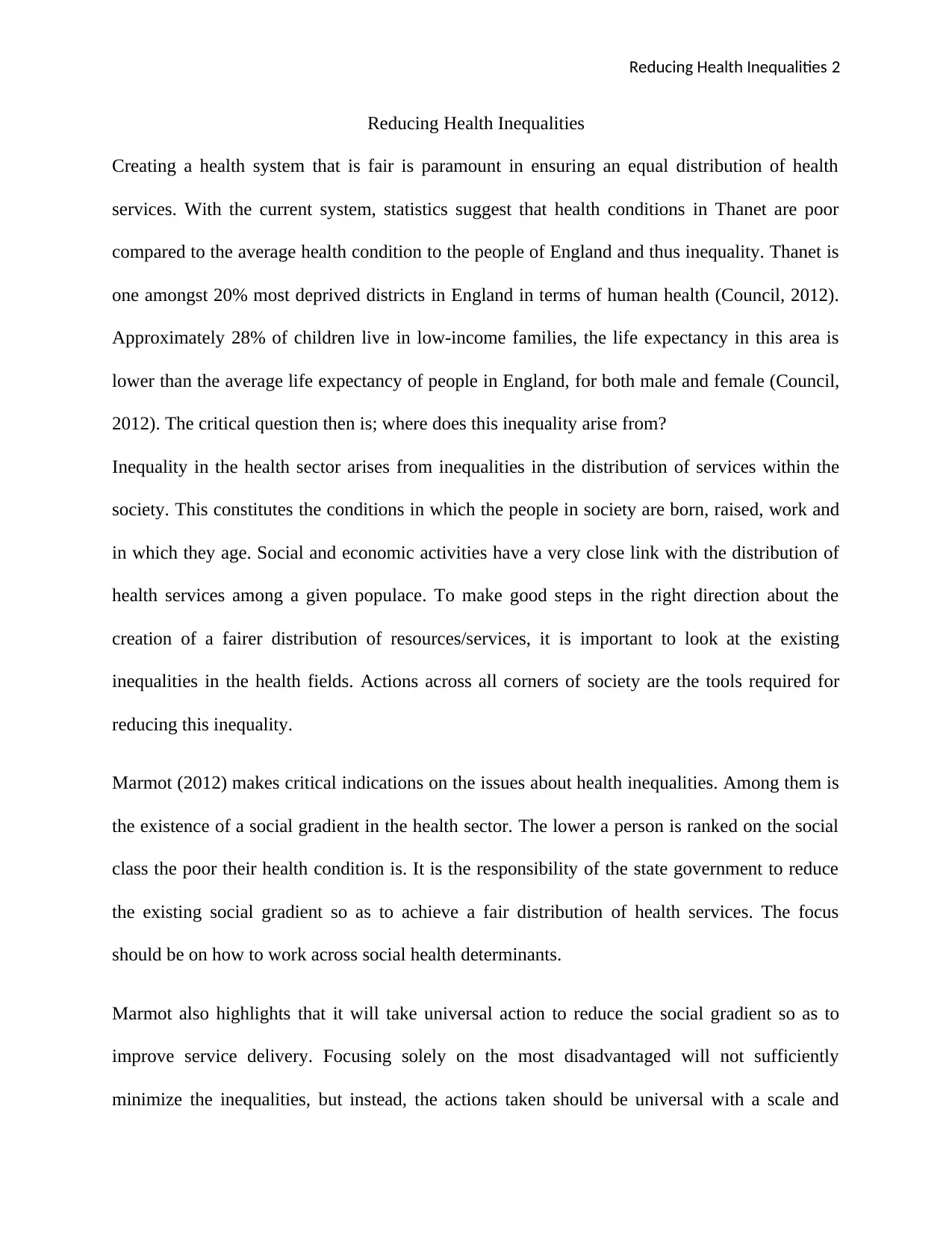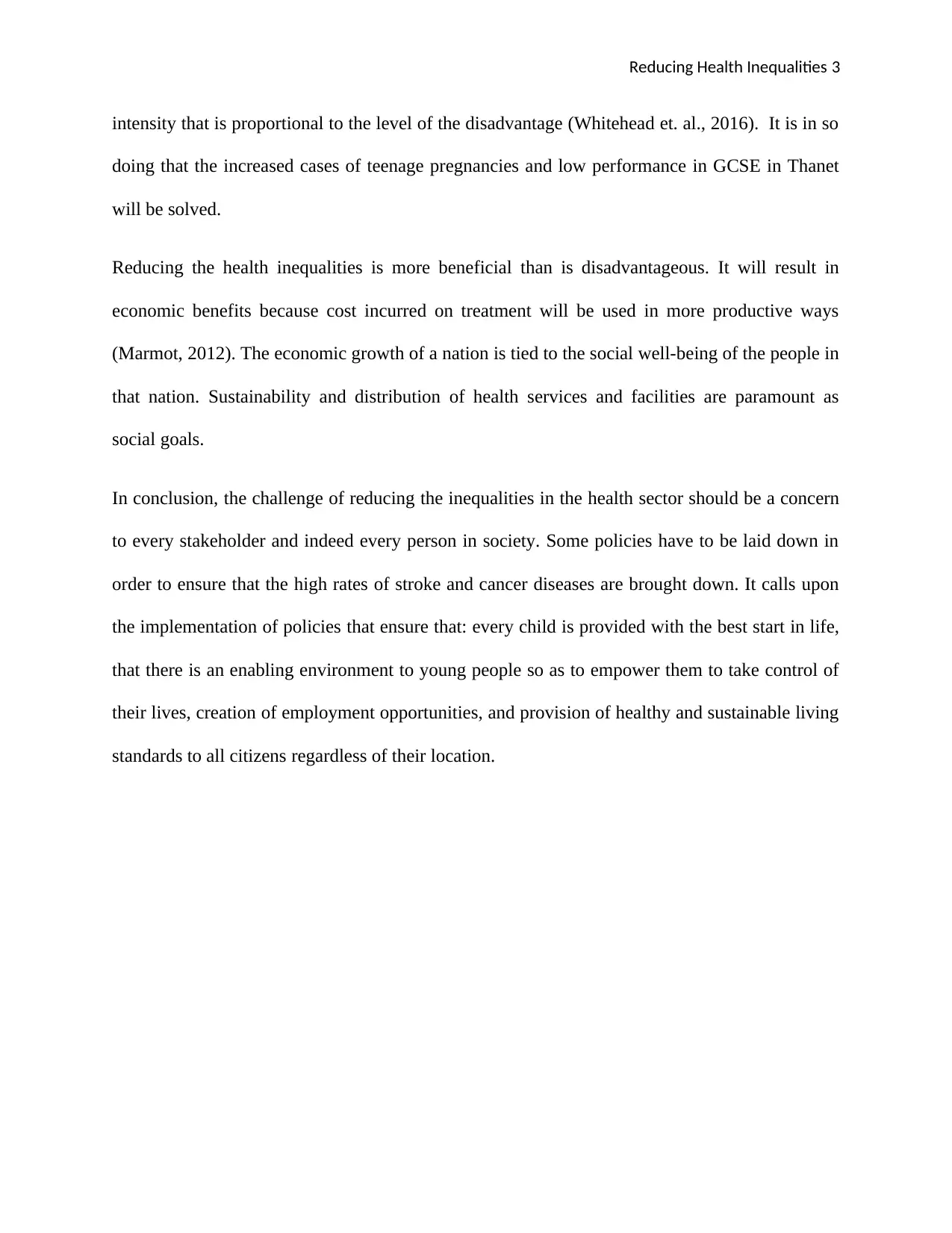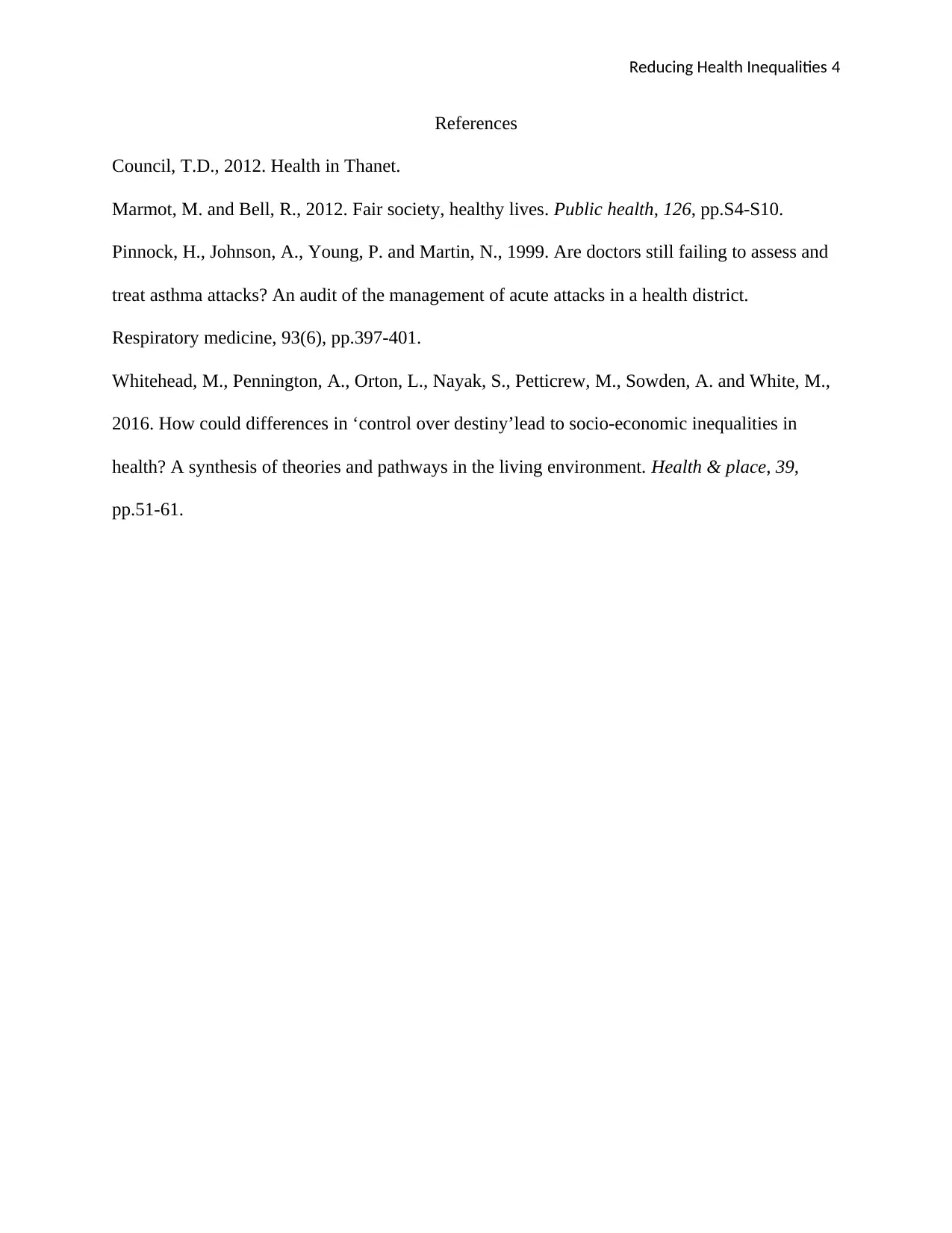Analysis of Health Inequalities and Social Determinants in Thanet
VerifiedAdded on 2021/05/31
|4
|751
|202
Report
AI Summary
This report examines the issue of health inequalities, specifically focusing on the health challenges faced in Thanet, England. It highlights the disparities in health outcomes compared to the national average, referencing statistics on low-income families and reduced life expectancy. The report identifies social and economic factors as key contributors to these inequalities, emphasizing the importance of addressing the conditions in which people are born, live, and age. Drawing on Marmot's (2012) work, the report stresses the existence of a social gradient in health and advocates for universal actions, tailored in scale and intensity to the level of disadvantage, to reduce inequalities. The conclusion emphasizes the need for comprehensive policies to ensure a healthy start in life for every child, empower young people, create employment opportunities, and provide sustainable living standards for all citizens, regardless of their location. The report underscores the economic and social benefits of reducing health inequalities and the need for stakeholder involvement in addressing this critical societal challenge.
1 out of 4










![[object Object]](/_next/static/media/star-bottom.7253800d.svg)